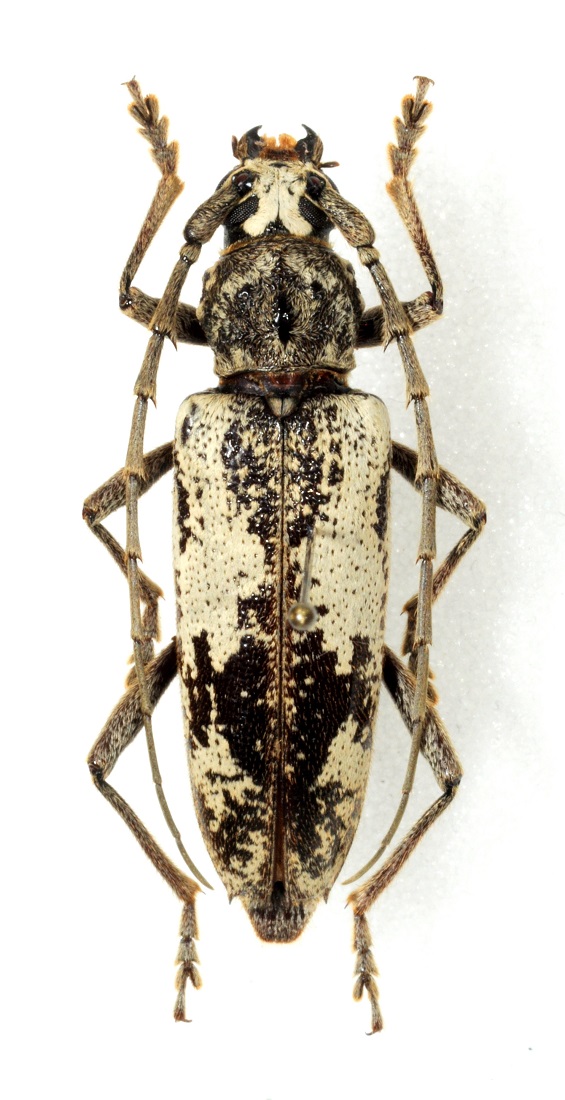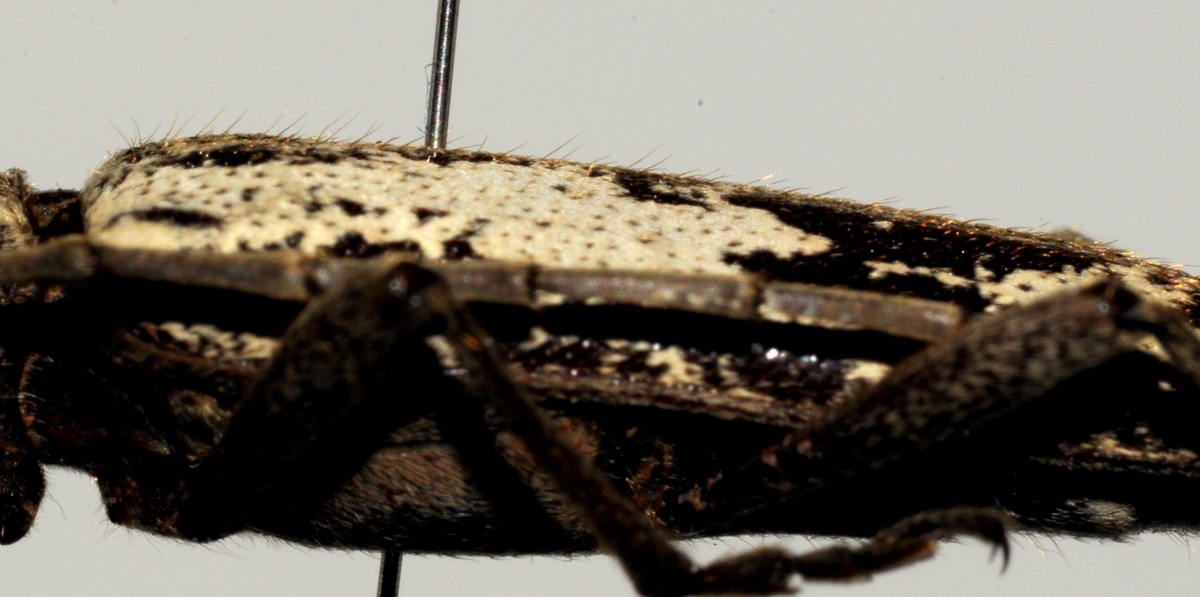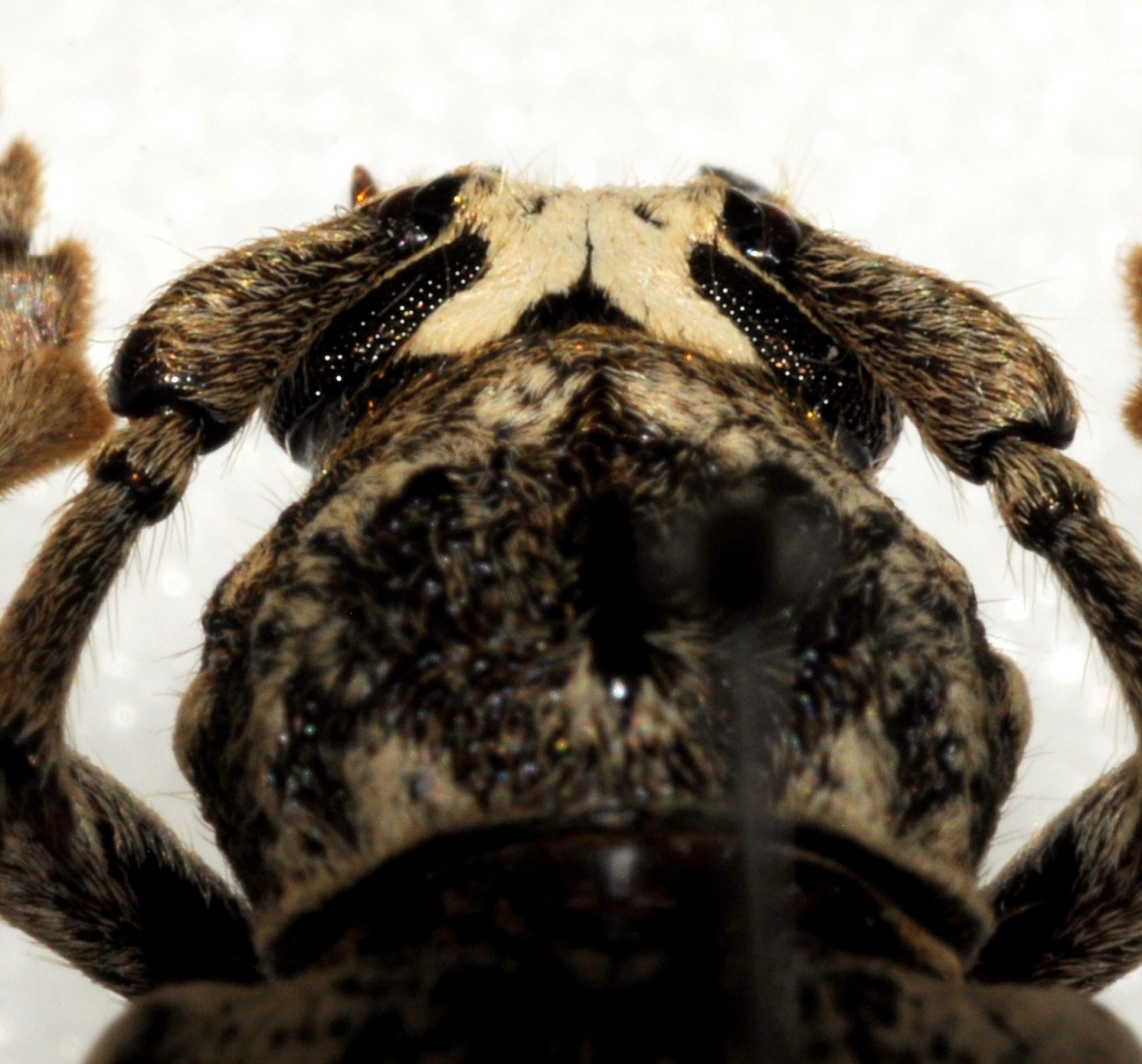| Author |
 Topic Topic  |
|
|
Pierre
Member Rosenbergia
   
Switzerland
1745 Posts |
 Posted - 09/09/2023 : 21:15:00 Posted - 09/09/2023 : 21:15:00



|

181.18 KB
Superbe species from Honduras, mount El Uyuca, 1500m.
By it's large seize (30mm) it recalls Enaphalodes. Someone can help? |
Edited by - Xavier on 09/09/2023 23:18:15 |
|
|
Larry Bezark
Member Macrodontia
    
USA
2212 Posts |
 Posted - 09/09/2023 : 22:24:59 Posted - 09/09/2023 : 22:24:59



|
Enaphalodes niveitectus (Schaeffer, 1905); not surprising, a nice southerly range extension.
Larry B. |
 |
|
|
Pierre
Member Rosenbergia
   
Switzerland
1745 Posts |
 Posted - 10/09/2023 : 05:54:12 Posted - 10/09/2023 : 05:54:12



|
| Thank you Larry ! Indeed, your website indicates Mexico. |
Edited by - Pierre on 10/09/2023 06:22:03 |
 |
|
|
dryobius
Member Rosenbergia
   
USA
1885 Posts |
 Posted - 10/09/2023 : 14:48:24 Posted - 10/09/2023 : 14:48:24



|
from Lingafelter & Santos-Silva, 2018
"Enaphalodes bingkirki is generally very similar to E. niveitectus (Schaeffer, 1905) and E. monzoni, sp. nov.
It differs from E. niveitectus by having very dense erect, elytral setae (most easily seen from lateral view, Fig. 11), shorter antennae (extending to about apical sixth of elytra in females-males unknown), and the antennal tubercles only slightly elevated, flat, and rounded at their apices (Figs. 9, 12). Females (and presumably males) of
E. niveitectus have relatively longer antennae that surpass the elytral apex and the antennal tubercles are more elevated with acute apices. Other differences between E. bingkirki and E. niveitectus include more fragmented dense, appressed elytral pubescence in E. bingkirki ....
Before accepting that there is a population of E. niveitectus occurring 1000 miles away from other records, you should try to see if the above analysis can be done. Pubescent patterns are not 100% reliable. By the way, Vlasak (2018) recorded E. bingkirki from a location just a few miles away from Uyuca (Biologcal Station). For me, some species of Enaphalodes are difficult and confusing!! |
 |
|
|
Larry Bezark
Member Macrodontia
    
USA
2212 Posts |
 Posted - 10/09/2023 : 17:36:20 Posted - 10/09/2023 : 17:36:20



|
Good points Dan,
Larry B. |
 |
|
|
Pierre
Member Rosenbergia
   
Switzerland
1745 Posts |
 Posted - 10/09/2023 : 20:24:01 Posted - 10/09/2023 : 20:24:01



|

174.7 KB

369.85 KB |
 |
|
|
Pierre
Member Rosenbergia
   
Switzerland
1745 Posts |
 Posted - 10/09/2023 : 20:28:15 Posted - 10/09/2023 : 20:28:15



|
I don't have the Lingafelter & Santos Silva-paper, so I can not compare with the figs. 9, 11 and 12. Dan, if you have a copy I would be interested!
The antennal tubercles are in my opinion quite flat and do not show acute apices. Regarding the erect elytral setae, I am not able to say if they are "dense" or not... |
 |
|
|
Capitaine
Scientific Collaborator
   
France
1833 Posts |
 Posted - 11/09/2023 : 11:08:37 Posted - 11/09/2023 : 11:08:37



|
| In my opinion, sparse in the figurative case, when "very dense" the supporting structure is hardly visible.... |
Claude |
 |
|
|
Pierre
Member Rosenbergia
   
Switzerland
1745 Posts |
 Posted - 12/09/2023 : 19:20:40 Posted - 12/09/2023 : 19:20:40



|
First of all: thank you, Dan, for the pdf. - I have now both papers, Lingafelter & Chemsak (2002) and Lingafelter & Santos-Silva, 2018. As a result, I must say that nothing appears fixed at 100% but most probably my beetle is niveitectus. The keys use some characters which are not easy to consider.
Especially the question of elevated or flatted antennal insertions is an ambiguous step. If I follow "elevated", I arrive at niveitectus. The "flattened" variant leads to bingkirki. Difficult to be sure if these insertions are elevated or not... Pro-and mesocoxal processes are in my specimen more of the niveitectus-type, as well as the 4th antennomeer which is "longer than median pronotal impunctate region".
Apparently, the hypothesis of a southern range extension of Enaphalodes niveitectus Larry mentionned could be confirmed. |
 |
|
| |
 Topic Topic  |
|


